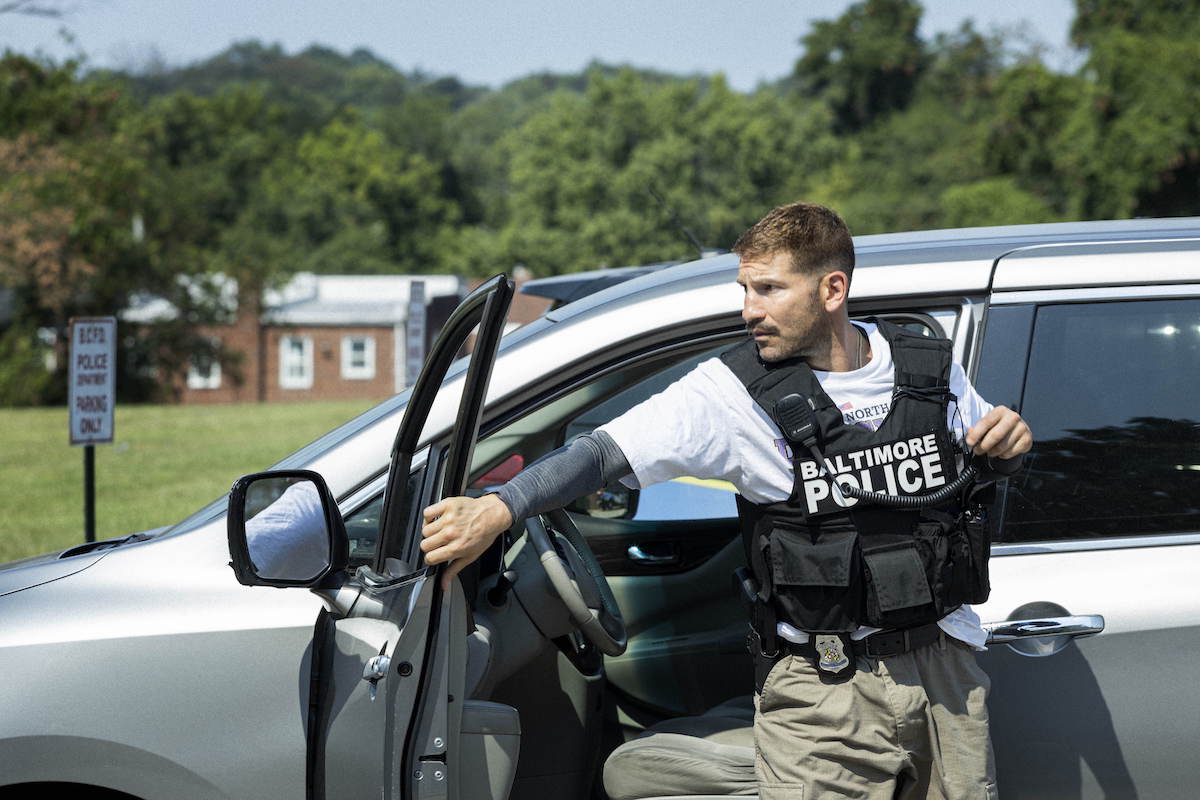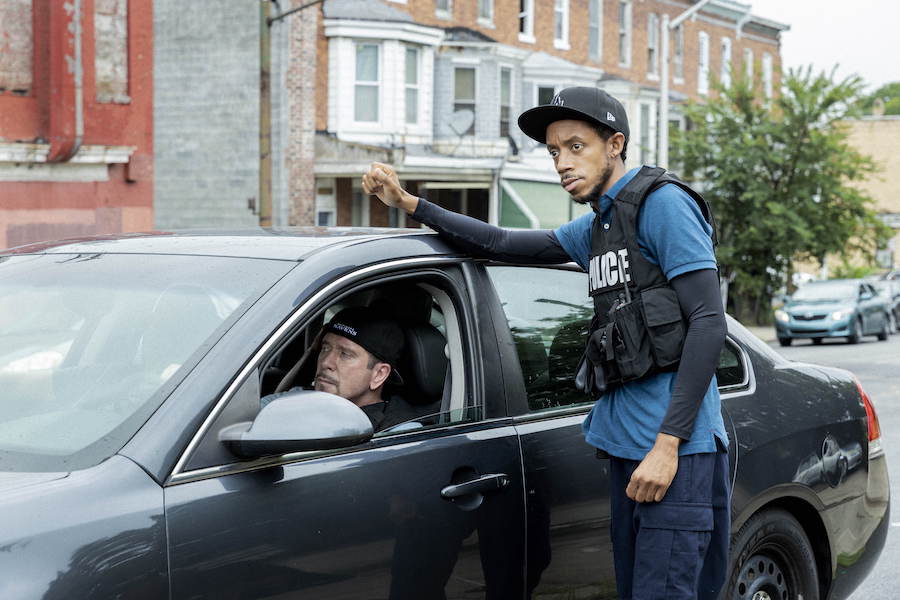HBO’s 'We Own This City' is a hardboiled tale of criminal police with eerily familar themes of ‘tanim drugs, tanim baril, tanim ebidensya’
There’s a darkness at the edge of town and its name is Wayne Jenkins.
The town is Baltimore City and the year is 2014, when three city prosecutors convened a meeting on the topic: Can we get the feted yet corrupt police sergeant Wayne Jenkins?
In the new six-episode HBO Original We Own This City, David Simon and George Pelecanos have come back to revisit their old stomping grounds, where the phones have become smarter but the policing has remained just as brutal and as criminal.
If you at all like cerebral action and procedural noir that has a docu drama feel to it, then this a must-see one-off limited series focusing on a real corruption scandal from 2017, based on Justin Fenton's reporting for The Baltimore Sun, and nonfiction book of the same name.
At the center of this maelstrom of cops as robbers is hero officer Wayne Jenkins, breathed into swaggering life by Jon Bernthal. Always reliable for his provocative depiction of fringe characters with an angry streak, Bernthal’s on-screen magnetism here is a mash of the militarized vigilante frustrations of The Punisher and the unmitigated greed of Brad, the muscled finance bro-dude from Wolf of Wall St.
This theme of ‘tanim drugs, tanim baril, tanim ebidensya’ may seem familiar, reeking as it does of garden variety policing on our own Third World milieu.
Bernthal’s performance of real-life Jenkins is as the hero you'd least suspect. His plainclothes unit called the Gun Trace Task Force was run “like a criminal gang,” a prosecutor said when the federal case on them came down and his fellow officers broke their infamous omerta code to spill the beans on their crimes.
But Jenkins was also a true community role model, awarded a bronze star when he waded into an angry crowd to rescue a fallen officer during the Freddie Grey riots. As a former Marine and MMA fighter who became a beat cop on the streets, he was feted by city organizations and held up as a stellar example for rookie cops to emulate.

How then could Jenkins and his Gun Trace Task Force crew also be robbing, selling drugs, planting evidence and framing innocent (mostly black) people, just as they were confiscating hundreds of illegal guns off the city streets? How did they get away with their staggering modus for years and even get promoted for it?
If this theme of “tanim drugs, tanim baril, tanim ebidensya” seems familiar, reeking as it does of garden variety policing on our own Third World milieu, then you likely know it all too well from Simon and Pelecanos’ other hit TV show The Wire.
The showrunners have told you all this before. This new series lives with full awareness in its giant old shadow. While they revisit old themes, the whole series still has that frisson of vexation all throughout. How is it now almost 20 years after the Avon Barksdales and other drug lords and we’re still having the same conversations about policing in America?
Since it had the luxury of longform exposition, everyone was pretty human on The Wire. Michael K. Williams played vicious robber of drug lords Omar Little, who followed a strict moral code of refusing to harm innocent "civilians" while his homosexuality showed a tender side. Detective Jimmy" McNulty, played by Dominic West, wasn’t just perennially insubordinate who peacocked both intellectual and moral superiority but was also a serial womanizer and notorious alcoholic.
Everything was painted in shades of grey. I’d argue such a return to Baltimore for the dynamic showrunning duo of Simon and Pelecanos should be with an even more corrupt cadre of cops, or not at all. This one is certainly a story that’s ripped from recent headlines. Plus, they try many of their old tricks on “We Own This City,” even conjuring up a casting call of familiar faces from Simon’s other series like Treme, The Deuce, and yeah The Wire.
Notable here is Jamie Hector who played vicious young drug lord Marlo and now terrifically plays Detective Sean Suiter—a homicide investigator whose past work with Jenkins threatens his new, clean cut image. But the very limited six-episodes format leaves the series in a place where a compressed narrative is crucial. Hence, a fractured temporal context gives us online police activity logs shown in close-ups of computer screens. Through them we fast forward and backtrack at will. It’s necessary I guess but admittedly sometimes hard to follow. I suspect the re-watch for this will yield gems that I simply didn’t see before.

It’s kinetic at apt times and slow burning when we need bigger context. The scenes with the FBI-fronted prosecution team (led by Dagmara Dominczyk’s Erika Jensen and Don Harvey’s John Sieracki) particularly Wunmi Mosaku’s Nicole Steele of the Department of Justice helps to put the world of policing stats, kicking down doors, courtroom sentencing, and political lobbying in a better frame when I get lost in the street-level details.
Baltimore is still like a Third World narco state and the cowboy squad of plainclothes officers under Jenkins is like a haunting of the spirits from other corrupt cop shows.
Director Reinaldo Marcus Green (the guy who also directed King Richard) helms all six episodes of this descent into the whys behind institutional rot and exploitation. He lenses the gamut with first-person ride-alongs as well as hard conversations.
Baltimore is still like a Third World narco state and the cowboy squad of plainclothes officers under Jenkins is like a haunting of the spirits from other corrupt cop shows from Training Day on to The Shield. These wraiths are ever present. Much more intimate and updated against a backdrop of BLM, #ICantBreathe, and the rioting of April 2015 in the wake of the death of Freddie Grey (the 25-year-old black man who died in police custody), after which gun violence soared and never diminished in Baltimore.
If you’ve seen the trailers, you could just watch this for Bernthal’s performance and come away with a narrative of good cop gone way bad. Certainly, he delivers a firecracker of a performance, lighting up the screen like a Roman candle fueled by pomp and brag.
But it would also be hard to miss the overarching arguments of the showrunners. They’re bold and big: how the name of the badge isn’t just synonymous with casual fraud, rather systemic and widespread corruption. We watch with admiration and astonishment as those around Jenkin’s orbit are drawn into his charisma and also, consequently, his grift. He encourages and perpetrates a culture of impunity among fellow officers as they take bigger and bigger stashes of money. In this world there is no incongruence that a cop would be feted as a hero while racking up sustained complaints, a surreal realm where success and misconduct don’t mean mutual exclusivity.
Such a system grinds up and spits out even the most dedicated cop with pure intentions. In one exemplary WTF scene, Jenkins’ Gun Trace Task Force arrest a man whose only crime was “driving while black.” They confiscate his house keys along with everything else found in his car. Later, the police crew show up at his house, enter without a warrant, and break open a safe. Inside is US$200,000. The Task Force would take half the money out and then close up the safe again. They would re-stage the opening of the safe with a crowbar and film it all this time on a cell phone video, acting out to show how they were opening it like it was for the very first time. That it now originally contains only US$100,000. They’d keep the rest.
The energy and the realist treatment of police corruption make this a must-watch for any fan of the crime and noir genres.
We Own This City sure is a fresh new level of the same hell that is Baltimore’s streets. Make this one a weekend binge since I can almost guarantee you won’t be able to stop yourself from streaming all six episodes over two days. Heck, I did.
You can now stream “We Own This City” on HBO Go


